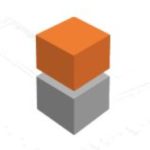For decades, discussions around quantum computing has felt similar to family driving vacations, with someone in the back seat constantly asking “are we there yet?” And like those long drives, the answer usually has been “not yet, but soon,” with “soon” doing a lot of the work in the reply.
That said, the vibe around the technology seems comparably different these days, with significant steps seemingly being made every week toward creating a useful, fault-tolerant quantum system. In a matter of months over the winter, Google, Amazon Web Services, and Microsoft all came out with quantum chips that moved the needle in solving the critical error-correction challenge, with Microsoft proclaiming that its Majorana processor means that reliable quantum computing is years, rather than decades, away.
Nvidia is flexing its AI muscle in the quantum field, calling itself an enabler and facilitator of the technology, and D-Wave has begun selling its annealing quantum systems – moving beyond just making the technology available via an Advantage system on its cloud service.
And the hits keep on coming. Researchers with MIT’s Engineering Quantum Systems group this month announced a new superconducting circuit – called a “quarton coupler” – that will enable a quantum processor to run fast enough to run error correction before the fragile qubits begin to decohere. Meanwhile, quantum researchers at Google are calling for collaboration between industry players and academic institutions to address hardware and integration hurdles.
The Entanglement Chip
Now Cisco Systems this week is unveiling a quantum network entanglement chip, a prototype developed with UC Santa Barbara that Vijoy Pandey, senior vice president of Outshift, the vendor’s R&D unit and incubator, says will accelerate the arrival of “impactful” quantum computing applications.
At the same time, the networking giant is opening its Cisco Quantum Labs in Santa Monica, California.
The entanglement chip adds to the ongoing discussion of what quantum computing will look like when it finally arrives in full. The chandelier-like quantum systems in photos look impressive, but quantum computing will likely be done in a distributed and cloud-like fashion, with smaller systems connected via quantum networks that allow for easier scalability, as seen with classical computers today.
In a blog post, Cisco’s Pandey noted that the challenge facing the industry is that while quantum applications will require millions of qubits, today’s quantum systems comprise only tens or hundreds of them, with many roadmaps see that growing into the thousands by the end of the decade.
“Decades ago, classical computing faced similar challenges until we began to connect smaller nodes together through networking infrastructure to create powerful distributed systems within data centers and cloud computing,” he wrote. “Just as the use of large classical monolithic computer systems phased out, the future of quantum does not lie in a single monolithic quantum computer. Scaled-out quantum data centers, where processors work together through specialized networking, will be the practical and achievable path forward.”
A Quantum Network Is Needed
It will take a quantum network infrastructure to tie create a distributed quantum computing environment possible and allow it to scale more quickly beyond the relatively small number of qubits that are found in current and near-future systems, Cisco scientists wrote in a research paper.
Such quantum datacenters involve “multiple QPUs [quantum processing units] … networked together, enabling a distributed architecture that can scale to meet the demands of large-scale quantum computing,” they wrote. “Ultimately, these quantum data centers will form the backbone of a global quantum network, or quantum internet, facilitating seamless interconnectivity on a planetary scale.”
The quantum network entanglement chip is fundamental to building this datacenter. Entanglement is critical to quantum computing because it enables pairs of qubits – in Cisco’s case, photons – to stay connected even if they are separated over large distances, something that can’t be done with classical bits and makes quantum systems so much more powerful than conventional machines.
Pairs Of Photons
According to Ramana Kompella, head of Cisco Research and Distinguished Engineer, and Reza Nejabati, head of Quantum Research and Quantum Labs, the chip prototype uses spontaneous four-wave mixing in III-V semiconductor waveguides – a process for entangling photon pairs – on a silicon wafer platform, creating more than a million useable entangled photon pairs per second per channel, or up to 200 million pairs per second in the chip.
It also reaches 99 precent fidelity and does so efficiently, consuming less than 1 milliwatt (mW) of power, and can do so at room temperature without requiring specialized cooling technologies, making the chip useful for modern datacenters. The researchers also were able to “create arrays of entanglement sources on the same chip for massive multiplexing for high rate end-to-end and multi-user quantum networking making it the brightest chip scale source today,” Kompella and Nejabati wrote.
It can also be integrated with existing fiber infrastructure, making it usable in current environments.
Switches And NICs
The entanglement chip will be central to an entire quantum datacenter the vendor is working toward, with new versions of what is found in current classical networks, including switches and NICs.
“A quantum network requires fundamentally new components that work at the quantum mechanics level,” they wrote. “When building a quantum network, we can’t digitize information as in classical networks – we must preserve quantum properties throughout the entire transmission path. This requires specialized hardware, software, and protocols unlike anything in classical networking.”
The quantum switch design includes waveguides to route quantum without measuring or observing them, which could introduce noise, light, vibration, or other environment factors that could pull apart the fragile quantum states. The quantum NICs, which will be vendor-agnostic, will connect quantum chips to the network, while the distributed compiler partitions quantum algorithms across processes and schedules the distribution of entanglement.
Cisco is developing other components for a quantum networking stack, according to Pandey, from entanglement distribution protocols to the Quantum Network Development Kit (QNDK).
This development of both hardware and software is a key part of Cisco’s strategy, allowing the company to understand how the components work together to create a network environment, he wrote.
“While some companies focus solely on one type of quantum computing technology (superconducting, ion trap, or neutral atom-based systems), Cisco is building a vendor-agnostic framework that works with any quantum computing technology, Pandey wrote, adding that it puts the vendor into a position to how Nvidia sees itself – as enabler and facilitator of various quantum technologies rather than a vendor with a narrow view of the emerging industry.

